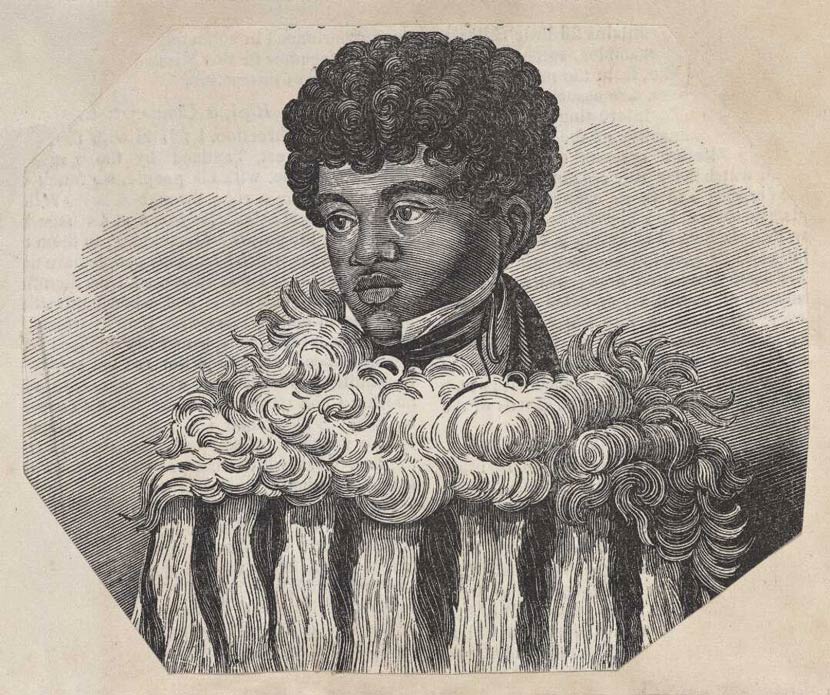
Eruera Pare Hongi, named after the Arctic explorer Edward Parry, was a pioneer of Māori literacy and a leading tuhituhi or scribe of the 1830s. Taught by missionaries and described as ‘the hope of his country’,1 in 1825 he wrote the first independently written letter in the Māori language at the age of just 10. He became an important link between his Ngāpuhi relatives and Pākehā, and in 1835 he wrote out the Māori text of He Whakaputanga, the Declaration of Independence.
This drawing of Eruera wearing a dogskin cloak over European clothing shows his bridging of two cultures. It was made during a visit to Sydney in 1832 or 1833 and published in 1834.
1. George Clarke, 21 July 1824, as cited by Alison Jones and Kuni Jenkins, He kōrero: words between us: First Māori-Pākehā conversations on paper, Huia: Wellington, 2011, p. 191
Using this item
Alexander Turnbull Library
Reference:
E-296-q-180-2
Permission of the Alexander Turnbull Library, National Library of New Zealand, Te Puna Mātauranga o Aotearoa, must be obtained before any re-use of this image.





Add new comment